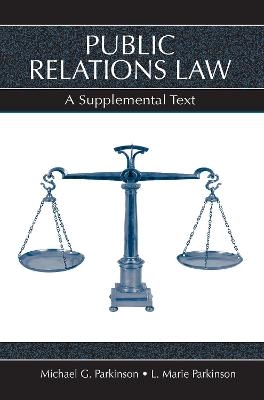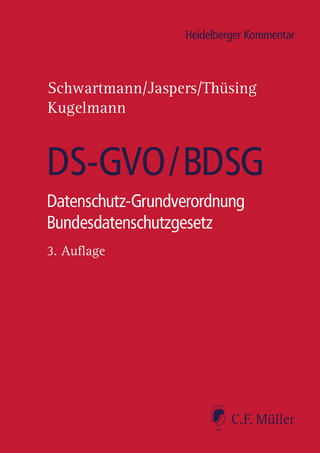
Public Relations Law
Routledge (Verlag)
978-0-8058-4974-5 (ISBN)
This supplemental text on PR law is intended to be used with other mass communication textbooks. It is intended for the mass communication law course, which is a mainstay in all accredited programs in mass communication, journalism, broadcasting, telecommunications, public relations, mass media, and related curricula.
Michael G. Parkinson is associate professor of mass communication at Texas Tech University. He has a PhD from the University of Oklahoma and a JD from Southern Illinois. He has professional public relations experience as well. His coauthor is his wife, L. MarieParkinson, who is also a practicing attorney and a professor in the department of political science at Texas Tech University.
List of figuresPrefaceChapters 1. Introduction to Freedom of Communication for Public Relations PractitionersThis chapter provides some background information on legal procedures and terminology that are omitted from most mass communications law books. Specifically it describes some rights claimed by journalists that are not supported by law and explains appropriate use of terminology. The distinction between a right and liberty is introduced and the different sources of law are presented. The chapter concludes with an explanation of how to analyze appellate court decisions.2. Commercial Speech and Public RelationsThis chapter defines commercial speech and explains that commercial speech law covers many actions associated with public relations campaigns. Laws governing political campaigns and lobbying are introduced, and the tort of appropriation, often called the right of publicity is explained.3. Right to Refuse to Give Journalists Information or Access.Assuming that the reader has read or heard a description of journalists’ rights of access to places and information, this chapter explains when a public relations practitioner may legally deny reporters access to clients’ facilities and documents. The chapter includes a discussion of limitations on First Amendment rights, laws of trespass and limitations on Sunshine acts and the Freedom of Information Act. The chapter concludes with an explanation that using advertising expenditures and information access to influence news coverage is legal.4. Contract and Employment LawChapter Four begins with an overview of contract law. It then focuses on employment and agency law and explains how those laws create obligations for public relations professionals and their clients.5. Investor Relations LawChapter Five begins with a brief introduction to concepts in securities law. It then focuses on specific laws and regulations that impact public relations practitioners who deal with stock sales and proxy solicitations.Appendices1. How to Brief a Case3. Sample Legal Documents: Photography Subject Release, Employment Contract, Covenant Not To Compete and Agency/Client Contract
| Erscheint lt. Verlag | 24.12.2007 |
|---|---|
| Verlagsort | New York |
| Sprache | englisch |
| Maße | 152 x 229 mm |
| Gewicht | 272 g |
| Themenwelt | Recht / Steuern ► EU / Internationales Recht |
| Recht / Steuern ► Privatrecht / Bürgerliches Recht ► IT-Recht | |
| Recht / Steuern ► Wirtschaftsrecht ► Gesellschaftsrecht | |
| Wirtschaft ► Betriebswirtschaft / Management ► Marketing / Vertrieb | |
| ISBN-10 | 0-8058-4974-2 / 0805849742 |
| ISBN-13 | 978-0-8058-4974-5 / 9780805849745 |
| Zustand | Neuware |
| Haben Sie eine Frage zum Produkt? |
aus dem Bereich


